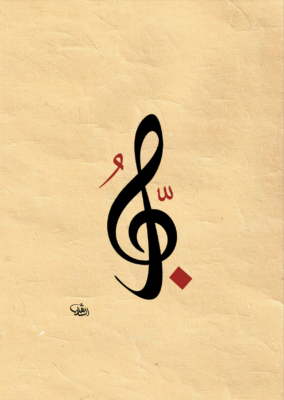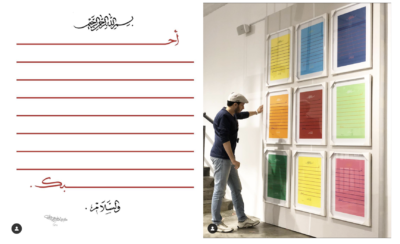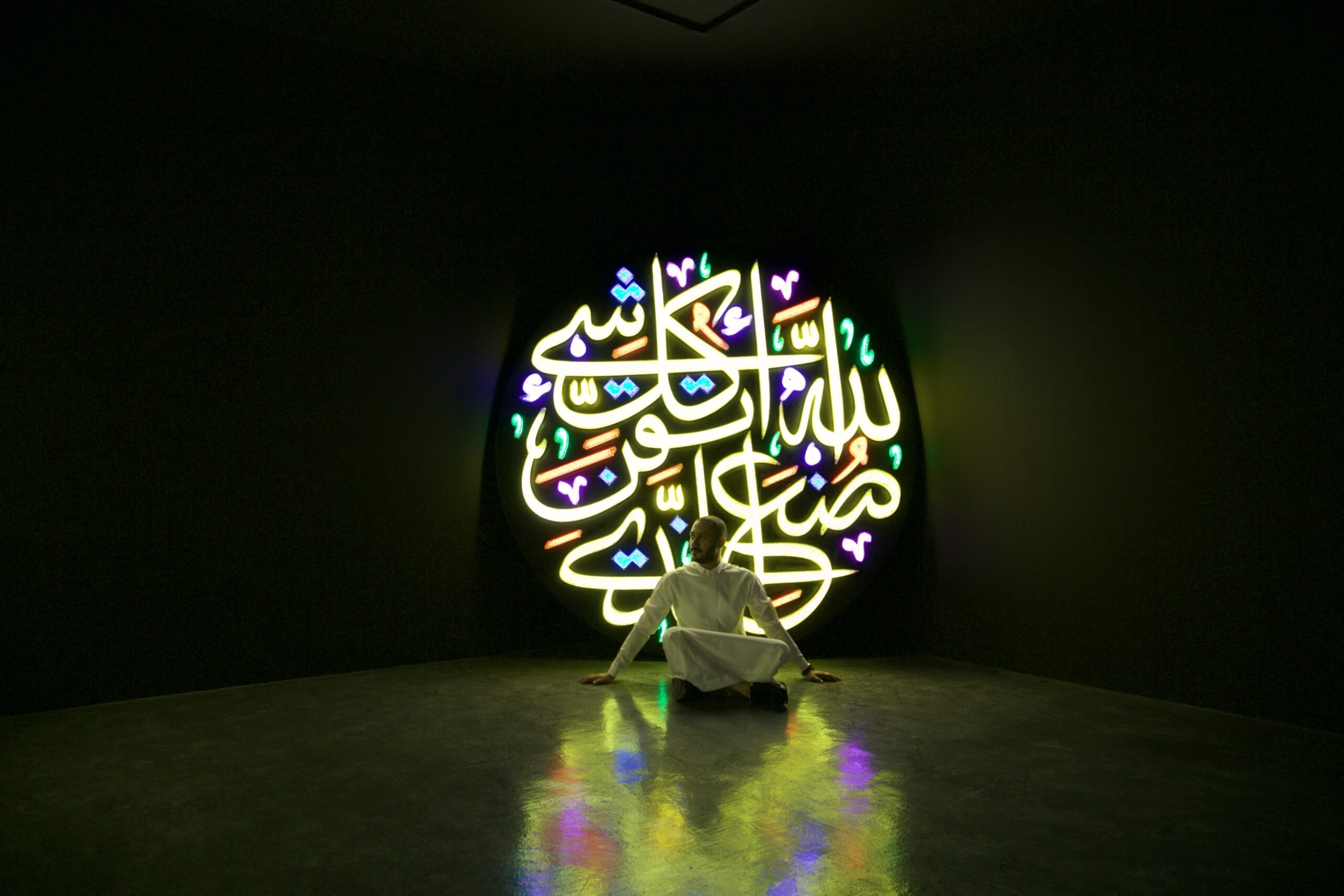Dealing with concepts that help humanity and expressing them through contemporary art practice: this is Abdelrahman Elshahed’s mission. During a recent interview with the warm Mecca-based artist, calligrapher and architect, we analysed some of his work and share the most striking ones here.
Born in 1993, Abdelrahman learned the art of calligraphy in the Holy Mosque of Mecca and holds a BA & MA in Architecture. His work focuses on spiritual geometry, found in Arabic calligraphy, and on ways to convey multiple concepts which are important for humanity through mixed media forms and deep symbolism.
Associating architecture and calligraphy
Connecting calligraphy to architecture, he designed one of the largest calligraphy gates in the world for the 2016 Jeddah International Book Fair in Saudi Arabia. What he chose to write on it is the Quranic verse which explains why the Arabic language is so intrinsically connected to Islam: “We have sent it as an Arabic Qur’an that you might understand.”

Gate for Intl. Book Fair (2016) © Abdelrahman Elshahed
Finding the language of spirituality
Abdelrahman explored this association further in “Vigilant Observer – رقيب عتيد” (2019). All monotheistic religions (Judaism, Christianity, and Islam) believe in the unseen, in judgment day and its aftermath. In Islam, it is believed that at judgment day, each person will receive a book which contains all their words and actions performed during their life, in writing.
This is the mission of two “watchers” or “recorders” that is, two angels called Ragib and Eatid, which is name of the artwork in Arabic. They monitor and write each person’s words and actions during their lifetime, as mentioned in the Qur’an, Surah Qaf, verse 18: “.مَا يَلْفِظُ مِنْ قَوْلٍ إِلَّا لَدَيْهِ رَقِيبٌ عَتِيدٌ”. Whether a person is sent to Jannah (paradise) or Jahannam (hell) is ultimately up to God’s mercy upon the believer.
The artist asked himself the following: when angels write, do they write in Arabic or in another language? He then decided to use a universal language, such as the one of physics which deals with sound frequencies, to express that.
His artwork links the concepts of the seen and unseen worlds to simulate the action of writing, recording, preserving, and displaying the great work that the two angels carry out throughout human life.

Vigilant Observer – رقيب عتيد (2019) – © Abdelrahman Elshahed
On the 4 pages laying side by side, from left to right, the artist recorded his voice saying a forgiveness prayer from the Qur’an, then normal talk, then a verse from the Qur’an and then a personal story.
One can tell that on both visualisations linked to the Qur’an, the form has rhythm, a strong visual harmony, and is more even and relaxed than the other normal speech.
Expressing human feelings
But the artist also ponders on earthly considerations!

Love Note – نغمة حب” (2017) © Abdelrahman Elshahed
In “Love Note – نغمة حب” (2017), he used the Arabic letters of the word “love” to make the treble clef shape. This work shows the very important links between feelings related to love and music.
What is particularly striking with this piece is how a single letter can be the expression of a single word, and how one word contains a lot of meanings that are difficult to express.
One of his most important projects, “Between the Lines – ما بين السطور” (2017), explores further the challenges of expressing one’s feelings. The artist designed each letter in old Arabic style, where they would start with “Bismillah” and end with the formula “with peace”. They contain one word only, spread out between the beginning and the end of the letter. The inside is left blank.
Abdelrahman designed these letters with verbs conjugated at the 1st person, such as “I love you”, “I miss you”, and “I long for you” The project currently contains about 13 different words.

Between the Lines – ما بين السطور” (2017)
What is particularly striking with this piece is how a single letter can be the expression of a single word, and how one word contains a lot of meanings that one might struggle to convey.
Now, it is up to you to fill in the lines with what’s inside of you.
Cover picture: The artist at Sharjah Calligraphy Museum © Abdelrahman Elshahed
Find out more Instagram: @elshahed_ Website: abdelrahmanelshahed.com Watch the video interview: https://youtu.be/GvBJYT6zg-U

